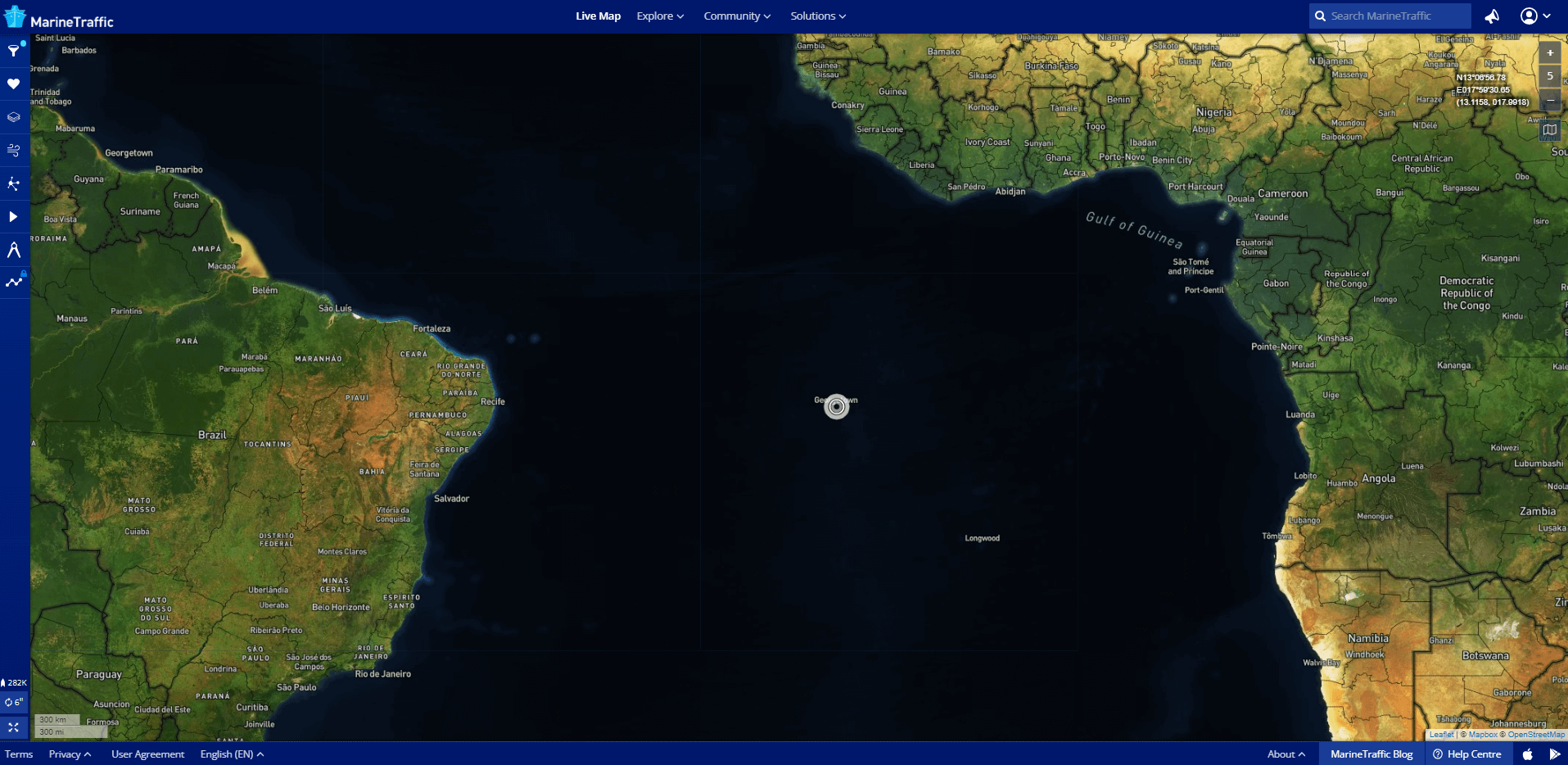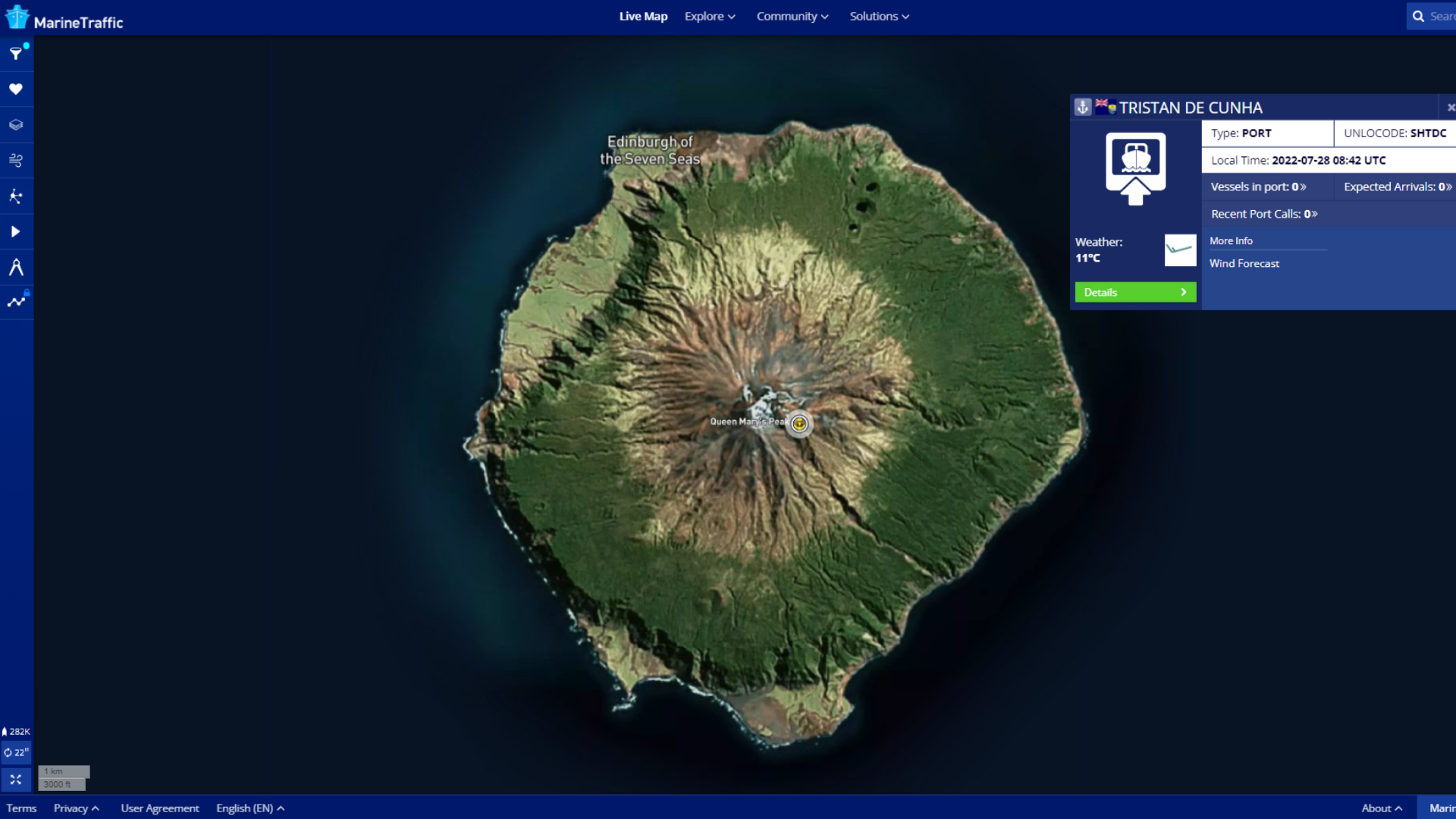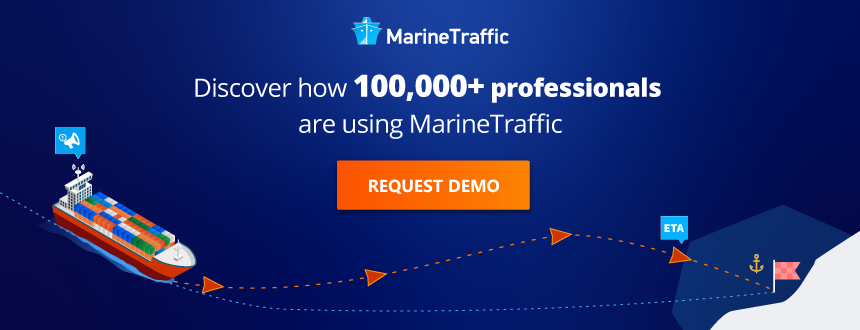The world is more interconnected than it has ever been. Yet, as far as we know, the age of the seafaring adventurer looking for undiscovered land is over. After all, satellite images of every corner of the earth from space are available. Some places, however, remain less accessible than others. These are some of the most remote areas in the world that are still (technically) accessible by ship, and with the help of MarineTraffic data, we can show just how lonely some places really are.
-
Tristan da Cunha
Tristan da Cunha is arguably the most remote island inhabited by people. It lies 2000km from the Island of St Helena, which is the nearest populated island, and itself is extremely remote. Tristan can only be accessed by a visiting multipurpose ship from South Africa, which is 2400 km away, and only calls at Tristan eight or nine times a year. See Tristan da Cunha Regular Ships for details of regular vessel calls.
The island lies in between the southern tip of Africa and South America.

This supply vessel’s route between South Africa and Tristan da Cunha can be seen here using MarineTraffic.

The yearly route shows the different research sites serviced by the vessel throughout the whole year can also be observed,

It is named after Portuguese explorer and conquistador Tristão da Cunha, who was the first person to spot the island in 1506.
On 14 August 1816, the island was taken over by the United Kingdom. The justification for this was to prevent Napoleon Bonaparte escaping from Saint Helena, where the former French leader was imprisoned.
-
Ascension island
A small volcanic island situated in the South Atlantic with a stable, sub-tropical climate of around 25-34°C all year round. Ascension is known for its stunning beaches, biodiversity, and being in the middle of nowhere.
Just under the Equator in the South Atlantic, this British outpost sits about 1,600 km from Africa and 2,300km from South America. It’s also around 1,100 km north of St Helena and a further 2,100km from Tristan da Cunha, all of which share a constitutional union as an overseas territory.

There is no indigenous population. The 800 or so people living there are primarily British citizens and employees of the organisations operating there. One cruise that services the place is the m/v Janssonius.
Getting there is quite the task. From 2002, civilian aircraft were permitted to arrive using the joint US-UK military airfield. However, in April 2017, the twice-weekly flights to the UK (RAF Brize Norton) and the Falkland Islands (RAF Mount Pleasant) were cancelled. The RMS St Helena cargo liner that served the region was retired in 2018.

MarineTraffic data shows how scarcely visited the island is compared to the continents flanking each side.

The bulk carrier, SLNC SEVERN, left AULDS COVE port in Canada on 07 June and arrived in Ascension 15 days later on the 22nd. The vessel had been at anchor from that date until 05 August, according to AIS data.
-
Pitcairn island
A British overseas territory in the Pacific Ocean. Pitcairn island is home to just 49 permanent human inhabitants and is hundreds of kilometres away from the nearest populated island. Anyone who successfully applies for settlement at this ever-tropical frontier can also request a free plot of land from local authorities. There is no airport, so getting to and from Pitcairn is only possible by ship.
To get there, one would first have to fly from Los Angeles to Tahiti, followed by a five and a half-hour flight to Mangareva, which only takes place once per week. The only supply vessel that travels to Pitcairn is here, but it only leaves once every three months. The next part of the journey is a 531km vessel ride, which takes another 32 hours of sailing before arriving at Pitcairn.
MarineTraffic shows how infrequent any calls made at the Pitcairn port are.

-
The Kerguelen islands
Also known as “The Desolation Islands”, the Kerguelen Islands are located in the middle of the Indian Ocean, 3,300 km away from Madagascar, the nearest populated territory. Since 1950, Kerguelen has only been continually occupied by scientific research teams of around 50 – 100 personnel, as well as home to a French satellite tracking station. The sole means of getting there is a supply and transport ship ‘the Marion Dufresne’ from Reunion Island every three months, which takes around six days.
The route of this infrequent voyage can be outlined here using the MarineTraffic ‘Past Track’ feature.

We can see how barren shipping activity is here, with only two fishing vessels currently observable near the island.

The islands are named after French explorer Yves-Joseph de Kerguelen-Trémarec, who officially discovered the islands in 1772. British cartographer Captain James Cook confirmed the French crown’s dominion over them when he landed four years later.
-
Palmerston island
Living up to its other name, ‘The island at the end of the earth’, this coral atoll in the Southern Cook Islands is located approximately 500 km northwest of Rarotonga. Access is by sea only, and most visitors arrive by private yacht, which only takes place a dozen or so times annually. Supply vessels come two or three times a year, and a few cruise ships are scheduled to go to the island.
Using the MarineTraffic station filter of the Live Map, the stations on this incredibly remote island can be highlighted.

Related: MarineTraffic AIS Network: a growing global community
The island’s ancient name was supposedly Avarau, which means “two hundred harbour entrances”. Captain Cook landed there in 1777 and named them after British politician Henry Temple, Viscount Palmerston.
Ports across the Cook Islands are shown on MarineTraffic Live Map. The 15 islands that make up the self-governing territory rely massively on tourism and the largest, Rarotonga, only has a population of 13,044.

Palmerston was once owned by barrel maker-turned-explorer William Marsters, who settled on the island in 1863 with his three Polynesian wives. He had 23 children, the descendants of whom now own and inhabit the island, making up most of its whopping 62-person population. As a result, it is the only island in the Cook archipelago with English as a native language.

